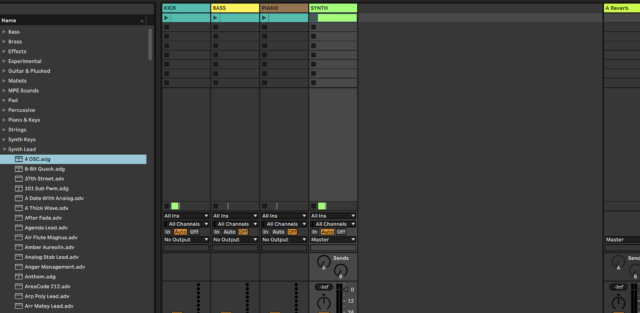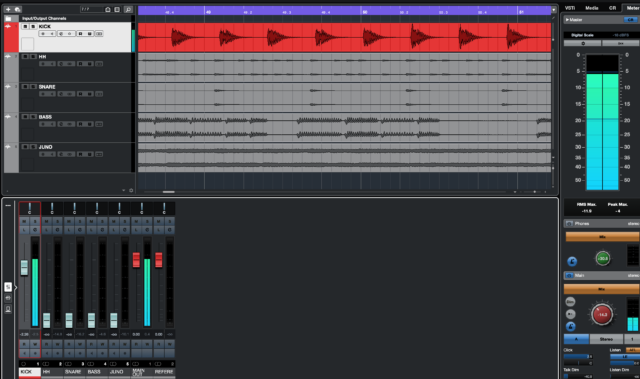A mixing engineer’s job is to make productions sound both technically solid and artistically engaging for the listeners. Although engineers have many tools to achieve this, it’s key to remember that mixing is not magic – and ultimately, the better the balance of the tracks they get from a producer at the start, the better results they can achieve.
You may think that mixing adds a certain percentage of value to what they get. With this view in mind, we can safely say that an artist “helping the mix” during production does ultimately have a positive impact on the final mix.
Beware, though – I’m not suggesting that you mix and produce at the same time, or try to do a mixing engineer’s job while producing. Rather, what I am suggesting is that as the producer should help the upcoming mixing stage by eliminating possible issues as you do the production.
Here’s what “mixing while producing” is – and what it’s not
Today, we’re diving into why it’s important for an artist to get into the mindset of “mixing” while creating a track. To be clear, though: this does not mean that you need to be a mixing engineer as well as a producer – but rather considering how your production process can assist their post-production work.
The mindset of “mixing during production” refers to being aware that each and every production decision you make, both big and small, actually has a significant impact on the mixed song. We’ll be exploring what those decisions are, and how each can directly affect the final mixdown.
But first, let’s start by taking a look at the process of music production at a high level.
Back to basics: the stages of track production
While music production is an art form, it usually involves pre-set stages as with any other production process. These stages are traditionally categorized more or less like this:
- Composing
- Arranging
- Recording (or “producing” in electronic genres)
- Mixing
- Mastering
Novice producers may look at this list and think production is a different thought process and mindset than mixing. With that, they may also think “mistakes” – or, let’s say “compromises” – in the production stage could be saved in the mixing process. This widespread misconception also has a saying: “we will fix it in the mix”. Sound familiar?
While some things can be fixed in post-production mixing, it’s key to remember that trying to “save” a mix can lead to the creation of a far less superior mix. The alternative, however, is creating a high-quality production by contributing from the get-go as the artist, where every element has been created with that “mixing mindset” during the first few creation stages.
What qualifies as a “strong” mix?
There are a number of key elements required to craft a quality mix:
- The instruments don’t fight each other for loudness – they are well balanced in terms of volume
- The instruments don’t mask each other in terms of frequency content – they can be picked up individually
- The instruments cover both the entire left-to-right and front-to-back space
- The mix covers the entire audible sound spectrum in a balanced manner
- And lastly: apart from technical characteristics, a mix must engage the listener.
A mixing engineer will typically have the necessary tools of the trade to help an artist achieve characteristics. Ultimately, though, an artist should not fully rely on the engineer to check all of these boxes; they should make the proper production decisions in advance.
First: focus on arrangement
A little-known fact about mixing: it starts with a track’s arrangement. Example: offbeat bass and four-on-the-floor kick works well from a sound perspective in dance music, as the kick and bass never fight for the same spot – even though they are both significantly bass-heavy sounds. You can see how rearranging the notes might have an effect on the mix without touching the EQ or other tools.
Another example here is rearranging the registers of similar sounds to ensure they don’t clash. Let’s say you have two bass synth sounds playing together. Shifting one of their octaves would give you a more balanced bass mix than putting both to the same register.
Overall, when arranging a song, it’s vital to be aware that decisions like the placement of instrumental notes against each other – in terms of rhythm placement and register of the notes – will have an impact on the song’s final mixdown down the road.

Building your track: instruments and sound choices
As producing in any genre obviously involves selecting an array of sounds to work together, it’s vital to consider how the tonal qualities of the sounds will affect the mix quality. Let’s simplify this with hypothetical examples.
Assume that you have one sound in your arrangement. In this case, you have the entire sound spectrum from 20hz to 20khz to work with. If you only have a synth pad sound for example, you can select a sound that is “full sounding” – meaning that it has an equal energy across its low, mid, and high frequencies. This ensures that the final mix will cover the entire frequency spectrum.
However, if you add a synth bass to this full-sounding pad sound, you then have two sounds that share some of the spectrum – to be more precise: the lower bass area. At this moment, you have a few options to tackle this problem:
- You might simply select a “thinner”-sounding synth pad with less bass frequencies
- You can alter the sound with the built in parameters of the synth (high pass filter, sub oscillator volume etc.).
Do you see how only sound selection or modifying the sound has a great impact on the mix even when production is taking place?

A neat trick for a nice balance: listening in low volume
Have you been in a situation in which you’ve added 30-40 instrument tracks and ended up with a muddy production – one to the point where you can’t easily pick up individual instruments? This may be because you are so immersed in the process of adding said instruments that their overall balance has been neglected. I find it useful to give breaks every 5-6 instruments into the production and start the mix of these handful instruments from scratch – with the key here being to do so in low volume.
I must stress low volume here because the trick is to gain a fresh perspective about the mix and production. This route will enable you to have a better judgment of the instruments’ balance, as you are able to hear them in chunks with a clear level of sound.
Let’s explore this a bit more.
First, put the volume to a very faint level. If you have a sound meter, you’ll want to specifically aim for 50 to 60dB SPL (think of lower-than-conversation level).
Then, bring all the volume faders to minimum (to minus infinity dB FS- meaning all the way down) and start to raise them one by one.
This will have two benefits:
- You will have a much more balanced mix of the instruments you have laid down so far.
- You will have a much better gain staging – so you’ll have good headroom on each channel’s meter on your DAW’s mixer, and likewise on the master fader’s meter.
TIP: If you have a kick track laid down already, start turning it up so that the peak master level reads around -5dB on the digital scale of your DAW. The whole mix will never turn the master meter red when your starting point is kick peaking at around -5dB FS.

Should I leave my FX in for my engineer? Do’s and don’ts
Mixing engineers are often asked by producers whether they should leave the effects on when submitting their tracks. This is directly related to the question of whether you should use effects during production.
Here’s the trick. Think about whether the effect you’re looking to use is part of the sound. For example, if you have a large reverb that you intend to be part of a snare sound, you should leave it as-is and print the track with effects. Saturation, delays, modulation effects, EQ, filters, auto filters, any other effects you threw on that you intend to be part of that sound – leave it. The mixing engineer will be more than happy to work with that sound, as it gives them a better understanding of the producer’s direction.
Produce with a mixing engineer’s mindset, and they’ll thank you.
Although producing a song has distinct stages like composing, arranging, production, mixing and mastering, it’s important to note that those stages have interdependencies. This is exactly why a producer should be aware that production decisions can constructively affect the later stages when you have the right mindset – from the kick and bass groove you picked to the style of reverb you used on your synth pad. Producing while keeping your mixing engineer in mind can ultimately add to your skillset and help develop your career as a more quality producer – your tracks can become more higher-quality sounding as you grow.
Now, next time you produce a song, keep in mind that your production decisions will have an effect on the final mix. With this new mindset in your toolbag, why not check your previous productions and see if you could improve them?
Feature photo credit: PolonioVideo / Envato





